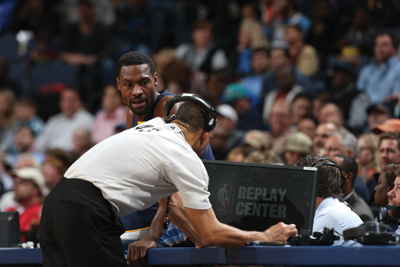Sports organizations have transformed into multifaceted media and entertainment enterprises. No longer do they just stage and administer events, sell tickets and sponsorships and license media rights to legacy network platforms, handing over control of their brands and valuable content. Rather, today’s modern sports property has evolved into one that systematically captures, processes and distributes its own content, strategically integrating its interrelated businesses.
In the classic structure, it was common for a sports organization’s TV production (or network licensee) to operate as an island focused on games, duplicating effort and expense without a holistic plan. Today, layered on top are essential in-house video production, game/event presentation, website operation and, most recently, digital/social media production. If all these operations are not interconnected, a huge integration, branding and efficiency opportunity is forfeited.
A centralized workflow system, or “content factory” approach, provides tremendous efficiency, eliminating repetitive production costs and improving the product. It can also facilitate development of additional revenue streams through new media distribution, marketing and sponsorship. Through reinventing the production process, the broadcast, digital and in-venue platforms take advantage of content being produced by each other, providing a more compelling product with consistent messaging, allowing the organization to maximize use of its most valuable media assets. Ultimately, this drives access to new audiences/customers with superior products on any platform at any time.
Branded content is now such a vital element of a successful sports media and entertainment enterprise across multiple platforms that an organized, efficient, and concerted effort to capture and utilize it will prove vital to successfully competing in the future. Just like a team’s game plan, there are several capabilities that sports organizations must work into their DNA to enable successful video operations, making the following standard operating procedure:
 |
The NBA used the content factory system to create a digital video catalog and its Replay Center.
Photo by: NBAE / GETTY IMAGES
|
•
Capture: Use every opportunity to chronicle the 24/7 activities of athletes, coaches and all team-branded personalities. Fans want to be behind the scenes, not limited to watching game/event telecasts. A videographer should continually follow the team/event on the road, roaming the stadium, arena or course to capture as much material as possible. This accumulated content should be complemented with the coverage of others, such as the traditional TV networks and the participants’ own cellphone video.
• Ingest: Have a procedure to collect all of the video elements and other content from disparate sources in a single, safe place (or low-cost cloud) and organize the materials for easy access.
• Curate: To deal with the shortening attention span of today’s and tomorrow’s fans, archived elements should be assembled and the materials carefully crafted to tell the most compelling and brand-relevant story in the shortest possible time segments. High production values are now also possible without the need for major post-production studios.
• Distribute: Assembling interesting video elements is great, but until they are well-distributed and redistributed (e.g., retweeted) and ultimately consumed, the promotional and brand-building power has not been realized. The key is to develop a multiple-use strategy. A video segment is not just for the organization’s website or licensed TV show, but rather to be used across any number of platforms, ranging from game/event telecasts, shoulder programming, online applications (e.g., YouTube, Facebook, Twitter), in-venue, as well as nonpublic business operations applications.
• Reuse: The beauty of creating one’s own production and curation capacity is the ability to reuse a library of materials at virtually no incremental cost. Content is part of an ecosystem, where previously created materials can be reborn to help tell current stories. For example, a segment from a produced piece can be reformatted or lifted for social media distribution. A series of highlights from a number of events can be sliced and diced into a series of specials. Archives can be repurposed and reborn for new generations of fans.
Today, good quality video can be captured by just a cellphone. Professional editing can be done on a common laptop. Such content is now delivered via mobile devices, online subscription video-on-demand services and via a multitude of national and local networks. With video content now a mainstay of websites and social media platforms, not just TV networks, it is essential that large and small sports organizations evolve into such story-capturing content factories.
Fortunately, this no longer requires huge investments in technical facilities, space and staff that it took when I built NBA Entertainment. While staff, facilities and some capital are still required, the amount is no longer prohibitive. HD-quality cameras, with professional lenses, audio equipment, lighting, and editing stations can be had for low six figures. Crewing no longer requires separate camera operators, recorders, audio techs and talent … all functions can be accomplished by a single person (or even without anyone using robotics), which has brought down the cost curve substantially.
Once centrally coordinated, the benefits can be stretched well beyond the production and programming arena. For example, at the NBA, the content factory system also became the digital video catalog for the league’s basketball operations group, giving it immediate real-time, shared access to logged clips of every official’s call from every game, enabling a far superior level of evaluating the performance of their referees. Along with creating efficiency, it also saved the costs of recording, shipping and logging. More recently this evolved into the league’s Replay Center operation.
The NBA’s marketing group also uses the system to monitor in-game product placement and sponsored elements, arming them with vital information to better service sponsors. The league also made the system available to the teams and licensees, further extending the value. Most sports entities will find similar additional hidden benefits to creating a content factory.
While many progressive organizations have activated some of these opportunities, others still consider them to be outside of their core competency or beyond their pocketbooks. The marketplace continues to demand more sports content, thus it presents huge untapped potential for rights owners and value for all of their stakeholders. Every organization must actively embrace this tidal wave of interest. There will be obstacles to overcome. Existing partners want to own/control branded sports content in order to monetize it. Internal departments often have turf issues. But failure to act is abdication that can lead to loss of relevance for an organization’s brand.
Embrace the future, which in truth is already here.
Ed Desser is president of Desser Sports Media Inc. (www.desser.tv), specializing in sports media rights negotiations, strategic planning, rights and asset valuations, M&A, management consulting and expert witness services. He has negotiated or advised on over $40 billion in sports media rights and transactions and launched many TV networks and distribution platforms.
IT’S YOUR TURN TO SPEAK OUT
For further information on guest columns in Street & Smith’s SportsBusiness Journal, please contact Betty Gomes at (704) 973-1439 or bgomes@sportsbusinessjournal.com.





